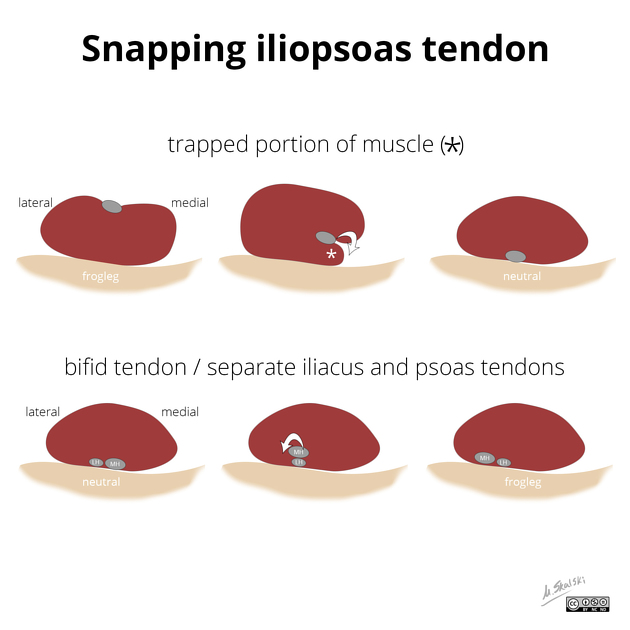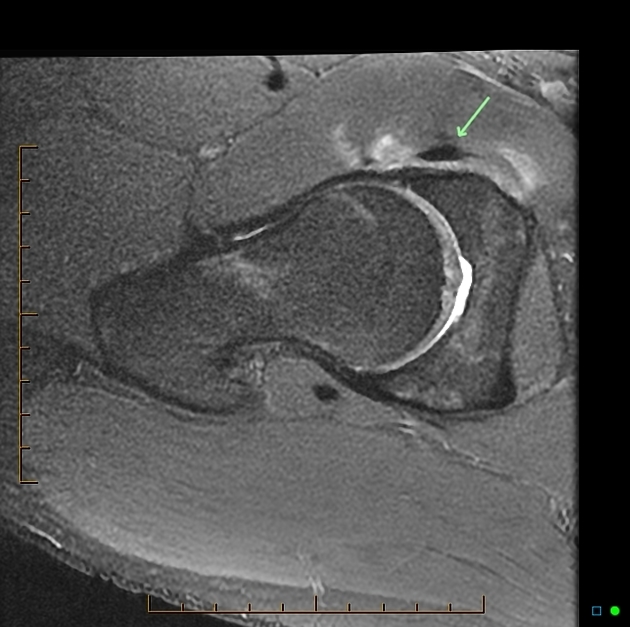Snapping iliopsoas tendon is one of the external causes of a medial snapping hip and occurs when a portion of the iliopsoas tendon moves abruptly onto the superior pubic ramus leading to a snap.
On this page:
Epidemiology
Most commonly affects athletes with repeated hip abduction (e.g. dancing, gymnastics, martial arts) 2.
Pathology
This typically is a result of a rapid relocation of a portion of the iliopsoas tendon, transiently entrapped anterior and lateral to the portion of the iliacus muscle belly during flexion external rotation and abduction of the femur, onto the superior pubic ramus during returning into the neutral position or less commonly a bifid tendon moving around itself 1.
Other rare known causes of snapping iliopsoas tendon are snapping over an adjacent paralabral cyst or across the anterior inferior iliac spine (AIIS) in the frog leg position 1,2.
Radiographic features
Ultrasound
Dynamic ultrasound examination while doing a manoeuvre to reproduce the snap is often diagnostic 1.
CT
Typically there is no role for CT in the evaluation of this abnormality, though if abundant in sufficient quantities, iliopsoas bursal fluid is detectable ref.
MRI
MRI does not demonstrate dynamic evidence of snapping iliopsoas tendon, however, can be helpful in demonstrating the secondary signs of iliopsoas tendon irritation and adjacent inflammatory changes. If present, this usually includes excess fluid within iliopsoas bursa. Synovial thickening and debris within the iliopsoas bursa, surrounding soft tissue oedema, and underlying bone marrow oedema pattern may also be seen. Thickening and increased intrasubstance signal of iliopsoas tendon and/or oedema within the adjacent iliacus muscle belly could also be encountered.
Treatment and prognosis
This phenomenon is present in approximately 40% of the asymptomatic population, and by itself does not require investigation, although in repetitive this condition can result in iliopsoas tendinopathy 1,2.
Iliopsoas tendon release or fasciotomy have been used to alleviate pain in those who fail conservative treatment measures.






 Unable to process the form. Check for errors and try again.
Unable to process the form. Check for errors and try again.